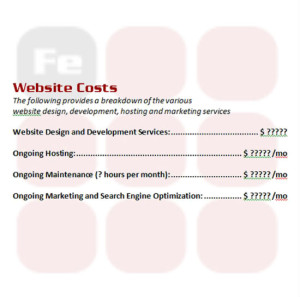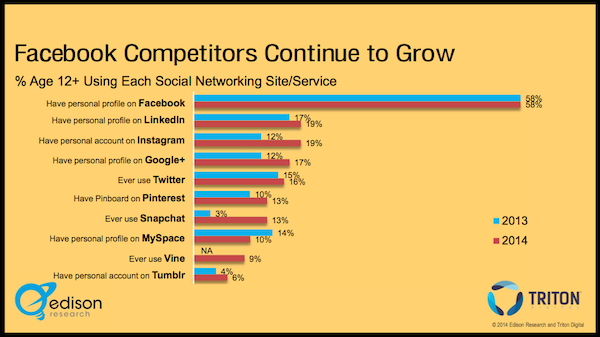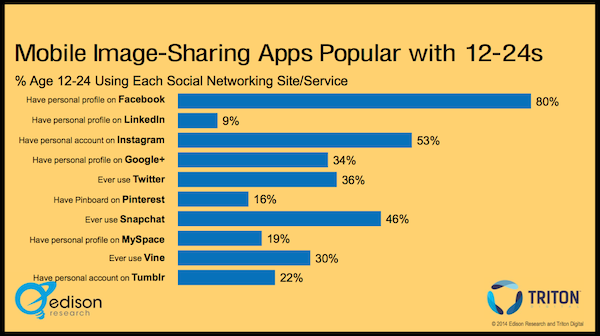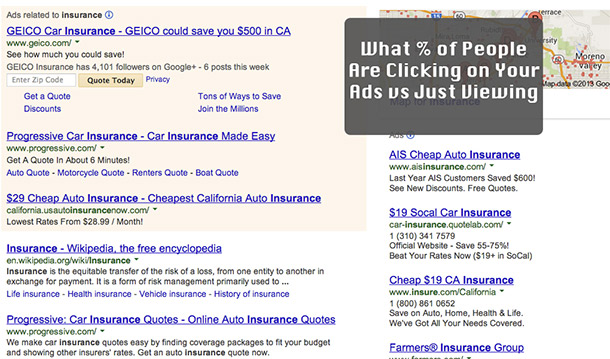-
Recent Posts
Categories
Latest Tweets
Tag Cloud
advertising american express amex blog blogging brand branding budget friendly business cards business success commercial printing commerical printing company brand direct mail effective marketing email email marketing facebook globaltech globaltech east inc google graphic design keywords logo mail marketing online online marketing online reputation pay-per-click ads print printing print marketing print myths print rumors reputation sbs seo small business small business saturday social social media twitter website website content
Tag Archives: online marketing
How Much Does a Website Cost?
By: Chris Foss, Published August 31, 2014
Over the past 18 years, I have written thousands of website proposals – for design, development, hosting, and/or marketing (SEO) – for companies and organizations of every size and (just about) every industry. Some people want a basic brochure website, others might want full online marketing strategies, while others ask for things that are, literally, impossible to develop. Everyone, however, always wants to know:
“How much will this website cost?”
And after 18 years, my answer is still the same. Websites can cost anywhere from free to more than $100 million, it all depends on what you want to actually achieve online.
Let’s discuss the design and build first
To start, ask yourself a few questions.
1. Are you looking to sell products online or include any ecommerce?
2. Do you require backend integration with any internal databases or systems (CRM, AMS, Inventory/warehouse system, accounting)?
3. Is your website primarily a marketing and informational site?
4. How tech savvy is your staff?
5. How established is your brand (i.e. will your web design be creating everything from scratch or do you have established brand guidelines)?
Finally, one of the toughest questions of all: how valuable is this website to your business or organization? If your business is a local Burger King franchise, then a website, while important, is not overly valuable compared to the rest of your marketing and operational needs. However, if your business is an online dating service, where the website IS the business, then obviously the design and build of the website will require much more attention and ongoing development.
Ok, so how much should I budget for my website?
Now that you’ve asked yourself some important questions, let’s get down to at least some budget ranges.
Cost of Basic Websites
 For many small businesses, a basic website is a great place to start. These types of websites can range from FREE (but be careful what you sign up for!) to around $5,000. A basic website is typically 3-10 pages and really just focuses on providing basic information about the business – who you are, what you offer, and how to contact you. A website company will typically stylize an existing theme or template and work with clients to build out these sites for $4,000-$5,000.
For many small businesses, a basic website is a great place to start. These types of websites can range from FREE (but be careful what you sign up for!) to around $5,000. A basic website is typically 3-10 pages and really just focuses on providing basic information about the business – who you are, what you offer, and how to contact you. A website company will typically stylize an existing theme or template and work with clients to build out these sites for $4,000-$5,000.
Cost of Custom Websites
I truly believe that all businesses should eventually have a custom or advanced website. Basic, template websites are fantastic for businesses starting out with a limited budget, but for a website to truly work for you and generate an ROI, you should consider a Web firm to build you a custom design website. After all, look at any successful website that you visit on a regular basis. Are any of them templates? No. And there is a good reason for that.
A firm will work with you to build a custom design website, and the process should start with in-depth discussions about your target audiences, corporate culture, online business goals, and behavior/conversion goals. A custom site should be developed to successfully address all of these points in order to establish a strong, effective website for your business or organization. Custom website designs typically fall anywhere from $9,000 – $20,000; however, depending on the size and requirements of your website, the cost can certainly fall above this range.
Cost of Advanced Websites
Advanced websites are really any project that goes beyond a marketing/informational website. These are websites that include ecommerce, highly interactive features, backend integration, and custom programming. Projects like these are spec’d out on a case-by-case basis and can cost anywhere from $20,000 to several million dollars.
Marketing Costs
As you can imagine, marketing costs can also vary greatly simply because there are a wide range of marketing services that we can apply to any website. Typical engagements with a firm include SEO services, social media campaigns, email marketing efforts, and consulting with online advertising. Marketing costs are usually centered around ongoing efforts and measurable marketing goals that we establish directly with you. Based on these efforts and deliverables, marketing costs typically range from $500/mo to $5,000/mo, again, depending on how involved, and how aggressive, you want your web firm to be.
Additional Costs
As you finalize your budget, keep in mind some of these additional costs as well.
1. Purchasing a domain name ($10-$20/year)
2. Hosting (usually $20-$100/mo depending on hosting needs)
3. Ongoing Maintenance – Don’t forget about this one. Despite how perfect the website might be at launch, within a few months, you can already start making upgrades. Platforms and plugins need upgraded and new functionality/new designs can always improve your site. You should plan to evolve your website on a regular basis, and this is usually provided on either an “as needed” basis or through a maintenance retainer.
4. Security Certificate for forms with private information or ecommerce ($200/yr)
5. Stock Photography ($20-$100 per image) or Professional Photography if needed
6. Video production if needed
Read more at https://www.business2community.com/online-marketing/much-website-cost-0987537#SdyRbhIFQFhkk4Vk.99
Posted in Online Marketing
Tagged advertising, marketing, online marketing, seo, website, website cost, website design, website develop
8 Ways to Make Your Marketing Message Stand Out

In Market Like You Mean It, marketing expert Al Lautenslager explains how you can engage your customers, create brand believers and gain fans for everything you sell. In this edited excerpt, the author describes eight strategies you can use to make your marketing messages cut through the media clutter that your prospects and customers see every day.
How does a marketer stand out in the crowded marketing storm? How can you hit your target market right between the eyes and cut through the media clutter that’s all around you? Answering these questions represents the holy grail of marketing.
Every day there are new messaging ideas and repurposed content from thought leaders and marketers of all types. If your messages are part of that clutter, your goal is to lift them above the clutter and get noticed. Here are eight essentials to consider as you start off and move closer to that marketing holy grail:
1. Focus on solutions. This is what customers are really looking for. And when there’s demand, half of your marketing job is done. Products and services that have a high demand get noticed early and often. Give your target market what they want or what they’re interested in looking at. Offer something that shouts “I’m a problem solver” or “I’m a solution” quickly, and your message will get noticed.
2. Aim at your target market. Marketing that doesn’t hit its intended target is classified as a waste, inefficient or junk (as in “junk mail”). Marketing that does hit its target market is classified as interesting, effective and very efficient. The key here is to give your target market something that interests them. If you’re a senior citizen interested in classical music, a direct-mail piece about the newest music releases for the latest rock-and-roll bands won’t do the job — you’re not part of the rock-and-roll music target market.
3. Use headlines and subtitles. Make these titles (and subtitles) provocative, thought-provoking, extreme and completely unexpected. One of the best headlines I’ve seen–one I know got noticed–was “Things the Government Won’t Tell You About Terrorism.” Another one that garnered equal attention was “7 Mistakes Banks Make Every Day.” Both would get attention and make people want to read more.
4. Have a crystal-clear message. Graphics can get attention, but don’t let them overwhelm your marketing to the point where your message isn’t being communicated. The famous advertising guru David Ogilvy once said, “I do not regard advertising as an entertainment or an art form but as a medium of information. When I write an advertisement, I don’t want you to tell me that you find it creative. I want you to find it so interesting that you buy the product.” You can’t bore people into taking notice with boring or unclear messages.
5. Try extreme marketing messaging. The truth is, extreme marketing works. Things that state the opposite, the negative and mistakes get attention. Here are examples of headlines or messages that get noticed because of their extreme nature:
•How to Run Your Company into the Ground in One Week
•How to Make Your Salespeople 10 Percent More Efficient
•How I Grew Profits by 0.005 Percent
All these headlines would probably get your attention and make you want to read on because of their extreme nature.
6. Offer a marketing hook. This is another way to get noticed that’s especially prevalent in content marketing circles today. Simply put, information is offered as an incentive for additional contact. This “hooks” a prospect, setting the stage for further communication. Here are a few examples of hooks:
•Call us today for a free mortgage loan calculator.
•Download a free recipe ebook that uses our spices and seasonings.
•Stop by today for a free vase for your Mother’s Day flowers.
All these hooks offer something of value to an interested prospect. They’ll all increase not only the attention your pieces get but your response rates as well.
7. Leverage odd items, shapes, and sizes. Another thing to consider when you want your pieces to stand out from the crowd is to create something that’s a different size or has a different tone or is otherwise outside the normal format. This includes odd-shaped mailing pieces, extreme colors or messages, and choosing unusual times at which to approach your target market, like talking about Christmas in the spring. Carlsbad Brewery once dropped fake passports in the New York City subway system to notify their target market about a new product they were launching. Finding a passport on the subway was unexpected; it’s not something you see every day. Carlsbad’s messages got noticed.
8. Answer directly “What’s in it for the prospect?” Holiday Inn Express advertised that their motels had the “number-one customer-rated showerhead.” Have you ever been asked to rate a showerhead? Holiday Inn discovered this was important to their target market and communicated that message directly to them. You can listen and read all about the features of a Holiday Inn Express, but hearing about the number-one customer-rated showerhead speaks to something all visitors want. What’s in it for them? A superior shower. Superior showers get noticed.
Standing out from the marketing clutter will always be a marketer’s challenge. Starting with these fundamentals will help you break through.
Posted in Marketing Strategy
Tagged advertising, marketing, online marketing, print marketing, social media marketing
67% Of Americans Use Social Media (With One In Six Active On Twitter)
 Two thirds of Americans have a profile on one or more social networks, reveals a new study, with about one in six (16 percent) using Twitter.
Two thirds of Americans have a profile on one or more social networks, reveals a new study, with about one in six (16 percent) using Twitter.
Edison Research surveyed more than two thousand U.S. citizens re using digital platforms and found that 67 percent of respondents use social media.
 Of these, more than half (58 percent) are active on Facebook – a statistic that is unchanged year-on-year – with 19 percent using LinkedIn (up two percentage points), 19 percent on Instagram (up 7 percentage points), 17 percent on Google+ (up 5 percentage points) and 16 percent on Twitter (up 1 percentage point).
Of these, more than half (58 percent) are active on Facebook – a statistic that is unchanged year-on-year – with 19 percent using LinkedIn (up two percentage points), 19 percent on Instagram (up 7 percentage points), 17 percent on Google+ (up 5 percentage points) and 16 percent on Twitter (up 1 percentage point).

As you might expect, all social networks – with the exception of LinkedIn – are more popular amongst the younger demographic.

An estimated 75 million Americans check their social networks several times each day.

Overall, these numbers are bullish for social media but not particularly strong for Twitter, which increasingly looks like it will have to keep a very close eye on Instagram (and even Snapchat) for attention from users of all ages, but especially the next generation of consumers.
Posted in Online Marketing
Tagged facebook, online marketing, social media, social networks, twitter
3 Things You Probably Don’t Know About Google Adwords
I get asked all the time about Google Adwords. For the uninitiated, Adwords are the ads on the top and side of Google when you enter in a search. Entrepreneurs are always wanting to rank their website at the top of every search, but there are certain things that you need to know before getting started with Adwords.
So I decided to answer three of the questions I get asked the most — all in one article. This won’t answer every question you may have but this should be a good start.
1. There are three types of keywords.
In the online world, there are three types of keywords that consumers use when searching online that business owners need to keep in mind. First they do their research, then they compare products and then they search with the intent to purchase. For instance, this is the exact process I used to purchase my new Bluetooth wireless headset:
Research phrases: When someone is in the research phase, the person often has no idea what he or she wants, searching only for generic and simple terms. I started my search with “headsets.” During this process, I learned that there are all kinds of different headsets: wireless, non-wireless, microphone, no microphone, etc. Notice, I have no idea what brand I want yet.
Comparison: As I peruse the search results for those generic terms, things start to get more specific. Not only am I reading reviews, but I’m pitting two products against each other. If you were in the comparison stage, you would most likely use terms like:
•Beats vs Bose
•Beats by Dre review
•Beats pricing
•Beats alternative
I personally don’t recommend that business owners purchase these types of phrases as I think they are a waste of your money. These types of phrases are used by people who are searching for an answer and are merely investigating a future purchase. If you’re bidding on phrases like this, try stopping for a week and see if your profits rise.
Buyer: A customer often has his or her credit card sitting next to the keyboard as they are searching. That’s why you need to come up with the right keywords that they are searching for. Most people know exactly what they want, just not where to find it. So they search. They will use specific keywords. You can always tell you have a “buyer keyword” when they use the following:
•color
•size
•make
•model
•brand name
For example, as I read reviews of headsets, I finally found the one I wanted. It was made by Planatronics and called the Audio 995. I was ready to purchase and I entered into the Google search results the phrase “Planatronics Audio 995.”
This is what I call buyer keywords. These are keyword phrases that people use with specific things about the product. If you know these keywords, you should be bidding on them as they usually lead to sales.
2. Try dynamic keyword insertion.
You can save time when you use dynamic keyword insertion. Rather than writing lots of ads, you can shortcut the process by putting {keyword} in the ad. It can be used in a number of different places:
•The headline
•The description lines
•Display URL
•Destination URL
Let’s say you have 1,000 keywords and you don’t want to write 1,000 different ads. All you have to do is add {keyword} and your desired keywords will appear. In most cases the keyword or keyword phrase the searcher just used while searching in Google.
In case you have a keyword that won’t fit in the ad, you can set a default word. If your default word was banana, then you do the following: {keyword:banana}. There isn’t a space between the colon and banana.
3. Ad position doesn’t affect CTR.
Because I’m going to get a lot of slack for saying this, I want to make sure that you read this carefully. The range of ad position for the first page of Google is 1 to 11. I’ve found that click-through-rate (CTR) isn’t affected by the ad position. Note that it doesn’t affect quality score either.

How can I make such a claim? Google bolds the keyword that is being searched for by a user. As you can see in the search above, I searched for “Insurance” and it’s bolded in the picture.
User sees your ad and sees that it’s relevant to them. The CTR will be the same, regardless of ad position. Make sure your keywords are in the ad somewhere, preferably the Title.
Posted in Online Marketing
Tagged adwords, cpc, google, google adwords, keywords, online ads, online marketing, ppc
Want Customers to Open Your Emails? Read This.
In a rush to acquire customers through Twitter and Facebook, email marketing is often dismissed as outdated and out fashioned. Why craft an email when you can engage on social media?
But don’t dismiss the ancient act of sending emails so quickly; Tweeting and “liking” may be flashier, but a recent McKinsey & Co. survey states that email is vastly more effective way to acquire customers. How much more effective? Nearly 40 times more than Facebook and Twitter combined.
All marketing emails, of course, aren’t created equal. It’s all in the subject line – whether or not a customer decides to open your email or trash it rests entirely on its clickability. Luckily, a new study uncovers the attributes needed to create an effective subject line. Retention Science analyzed 267 million emails sent across 543 campaigns over the past six months. If you want to reach customers through email, consider these tips when crafting your next subject line.
Keep it between six to 10 words. Subject lines with six to 10 words perform best, generating a 21 percent open rate, well above industry standard. Those with subject lines containing five or fewer words ranked second with a 16 percent open rate, and those with 11–15 words returned a minimal 14 percent open rate. Despite this, the majority of emails sent (52 percent) had subject lines in the 11-15 word range.
Consider the device it will be read on. Thirty-five percent of emails are opened on mobile devices. Given that most smart phones only display five or six words of a subject line, being brief and concise is even more critical for mobile marketing.
Take a personalized approach. It’s shown to help re-engage and retain customers. Of the email campaigns studied, those with the recipient’s first name in the subject line delivered a 2.6 percent increase in open rates compared to those without a name.
Consider referencing a movie or a song. A separate Retention Science study analyzed 3.7 million emails and 22 campaigns where movie names or song lyrics were referenced in the subject line and found they were opened 26 percent of the time, while emails with more traditional subject lines were opened 16 percent of the time. Again, this allows you to take a more personal approach, and target certain customer segments.
Reconsider flash sale campaign. Nearly 80 percent of flash-sale email campaigns had subject lines in excess of 20 words; unsurprisingly, they consistently underperformed compared to campaigns with shorter subject lines. Their bad performance record may also be blamed on the frequency at which they’re sent — flash sale brands tend to email customers four to eight times a week compared to the industry standard of two to four times a week.
Posted in Online Marketing
Tagged email, email campaign, email marketing, marketing, online marketing
Insure Yourself Against Extinction by Building Your Personal Brand
 Many of the world’s best business leaders were born out of failed businesses. Knowing that there is a chance that the company you work for or own right now could someday fail, you need a strategy that can ensure your personal success no matter what cards your business is dealt. Let’s have a conversation about your personal brand.
Many of the world’s best business leaders were born out of failed businesses. Knowing that there is a chance that the company you work for or own right now could someday fail, you need a strategy that can ensure your personal success no matter what cards your business is dealt. Let’s have a conversation about your personal brand.
As a 20-year entrepreneurial veteran, I have learned a few things about branding. The most important lesson of all is that I am my own brand, and so are you. That’s not to say that my businesses are not brands in and of themselves. However, you, as your personal brand, is a living, breathing, money-making, sales-churning, customer-serving human being.
Every entrepreneur is their own personal brand. If you don’t believe that’s true about you, then you are in for some trouble. If you own or work for a franchise and your pitch to prospective clients, employees and partners is all about the value it brings to the table, then what happens when another franchise opens two doors down? If you believe you are not a brand, then does that mean that when the company you work for fails, you do too?
The only insurance you have against extinction is building your brand. Here’s how to build your own personal brand in conjunction with or separate from your business brand:
Find your personal value proposition. You have a very specific value proposition that you bring to the table as an entrepreneur. Perhaps you’ve worked in your industry for 50 years, have a Harvard education or have lived through an experience that makes you better at your job than most. Whatever value you bring to the client, the employees of your company and to the organization as a whole should be spelled out regularly.
Work your value proposition into every presentation you give. Let your clients know the unique value you bring to the table to help them accomplish their goals. If you are the CEO or president of your company, create a blog where you write regularly to your employees, stockholders and customers. The more you speak to them, the more you establish yourself as the face of the organization.
When you become a brand within the company brand, you insure longevity for yourself, separate from the organizational brand. Zappos is an amazing brand, but so is Tony Hsieh.
Capture your brand “logo.” You are a brand and your logo is your photo. Your photo should be on everything and you should work with a photographer who can capture the essence of who you are. Let your business personality shine through in that photo. People can relate to a human being more so than they can relate to an inanimate figure. It’s OK to use your company logo, but certainly also include your personal photo. When the client, employee or stockholder thinks of you, wouldn’t it be nice if they pictured you as a human being and not some vector image?
Distinguish both brands. Building a company brand takes hard work. The best way to distinguish between your personal brand and your company brand is to explain and distinguish the two whenever possible.
Building a business is like creating a living, breathing, entity that will someday live all on its own — at least that’s the goal for many entrepreneurs. The inherent risk in building this type of entity is that many do end up going extinct. That doesn’t mean you should too. Certainly Walt Disney and Steve Jobs never worried about their employability nor their ability to build new and better business entities. They didn’t worry because they were, as human beings, strong brands too.
Build your own personal brand simultaneously to your business brand and you’ll have no problem plucking yourself away from your current entity someday. Be well poised to start your next venture way ahead of the curve because you bring your brand to the table.
Posted in Marketing Strategy
Tagged brand, branding, company brand, logo, marketing, online marketing, personal brand
Is Your SEO Strategy Ready for Google’s New Algorithm?
 Last fall, Google rolled out one of its largest changes of the past decade – an entirely new search algorithm, nicknamed “Hummingbird.” In contrast to the past updates, Panda and Penguin, which modified existing search algorithms and affected roughly 2 to 5 percent of search queries, Hummingbird is believed to have affected nearly 90 percent of all queries and dramatically changed the way the engine processes user requests.
Last fall, Google rolled out one of its largest changes of the past decade – an entirely new search algorithm, nicknamed “Hummingbird.” In contrast to the past updates, Panda and Penguin, which modified existing search algorithms and affected roughly 2 to 5 percent of search queries, Hummingbird is believed to have affected nearly 90 percent of all queries and dramatically changed the way the engine processes user requests.
The impetus behind Hummingbird comes down to context. In the past, Google’s algorithms processed user queries according to each individual word in the query string. As an example, a past search for the keyword phrase “hotels in Chicago” would require Google to parse through its index and find the best matches containing the words “hotels,” “in” and “Chicago.”
But now that users are more likely to enter complete questions — for example, “what is the best hotel in Chicago?” — into the engine, Google wants to understand the context behind the query in order to serve up the best possible results. Did you mean the best hotel in terms of price point or luxury level? Are you on the move in Chicago and looking for the best hotel nearest to your location? Hummingbird attempts to determine the context for your question, although it isn’t immediately clear whether it does so successfully in all cases.
What is clear, though, is that there are some tweaks you’ll want to make to your SEO strategy in response to this update — especially if you’re still using “old school” techniques. Here are a few of the strategies you’ll want to incorporate into your day-to-day SEO routine:
Don’t do keyword research — do market research. As Google continues to evolve, it’s clear that traditional keyword research — as in, the measurement of volume and competition metrics for individual, granular search queries — is on its way out. Google now cares less about whether you’ve optimized each individual page on your site to a particular keyword and more about whether your page’s content answers the question presented by the search user.
So instead of spending a ton of time trying to find the magical combination of keyword metrics that’ll guarantee you natural search traffic, brainstorm the questions your users are asking about your industry and brand. Then, make sure your website’s content clearly answers these questions in a way that’s easily understood by the search engines and provides extra value to your visitors.
Incorporate questions into your content. As you begin to incorporate the questions you’ve come up with into your site’s content, there are a few new guidelines you’ll want to keep in mind:
• Unless your content is poorly written (and at risk of suffering from a future Panda penalty), there’s no need to go back and rewrite every page you’ve ever created to target user questions instead of keywords. Add on extra content if you need to, but don’t risk messing with content that’s already performing successfully.
• There’s no need to follow a “one page, one question” rule, as many page managers used to do with traditional keywords. Pages can answer multiple questions, as long as the search engines can make sense of your content and each question is answered fully for your visitors.
• Try to provide your readers with as much information as possible. Plenty of SEO managers are concerned about the potential of Google’s new information card feature — which displays answers to questions posed directly in the sidebar of the results page — to steal away traffic that would otherwise arrive from search clickthroughs. While this feature is currently only available in Chrome browsers, there’s no reason to think it won’t be rolled out more widely in the future. To prevent possible traffic poaching, give your pages so much substance that it’s worth your readers’ time to take the extra step of visiting your site.
The more content, the better. Posting new content to your site on a regular schedule has been an SEO recommendation for some time, but with Google Hummingbird in place, this tweak becomes even more important. The more content you have, the more questions your site answers — and the more likely it is to appear in the contextual search results. For maximum impact, focus on adding new content that explicitly answers user questions — including “how to” posts, FAQs, process tutorials and other similar pieces.
Beyond these few tweaks, keep following the SEO best practices that have been put in place for this post-Panda, post-Penguin era. Build great content that accumulates high quality, relevant backlinks naturally on its own. Use a responsive design that makes it easy for readers to find information from you wherever they are. And above all, stop trying to outright manipulate the search rankings. Think long term about the direction Google appears to be going and make your site as attractive as possible by playing by the rules and being a good webmaster.
Posted in Online Marketing
Tagged google, marketing, online marketing, optimization, search algorithm, search engine, seo
Social Media May Soon Drive More Traffic to Your Website Than Search Engines
 If your marketing strategy doesn’t have a serious social media component you should probably consider adding one. While most people in the U.S. still use traditional search engines such as Google to find what they’re looking for online, users — especially younger ones — are increasingly discovering websites by way of social networks.
If your marketing strategy doesn’t have a serious social media component you should probably consider adding one. While most people in the U.S. still use traditional search engines such as Google to find what they’re looking for online, users — especially younger ones — are increasingly discovering websites by way of social networks.
Last year, half of all internet users ages 18 to 23, and 43 percent of users ages 24 to 32, used social networks as their go-to internet-discovery resource, according to a new report from Cambridge, Mass.-based Forrester Research. Overall, social networks like Facebook and Twitter are the preferred means of discovery for nearly a third of all Americans, up from 18 percent in 2010.
At the same time, 54 percent of American internet users still relied on traditional search results to find the information they were looking for. As expected, that number is on the decline and, according to the report, represents a seven-point drop in overall search engine popularity from 61 percent in 2010.
Although consumers are rapidly changing their habits and behavior, marketers still haven’t caught up, prioritizing SEO and paid search efforts above engagement over social media. In order to turn that around, the report asserts, search marketing teams need to learn what searchers are really looking for and focus on broader engagement instead of simply trying to drive an immediate sale.
Some other interesting highlights from the report:
•Direct marketing works. In 2012, 26 percent of users reported typically finding websites through corporate and branded emails, an 11 point jump from the previous year.
•Sponsored search results surge in popularity. Last year, 18 percent of web users said paid search results helped them find what they were looking for. That’s up from eight percent just the year before.
•Links keep users engaged. Roughly 28 percent of all internet users, regardless of age, discover new sites from links on websites they’re already visiting, the report said.
Posted in Online Marketing
Tagged facebook, marketing, online marketing, seo, social media, twitter, youtube
MARKETING 101
In order to successfully grow your business, you’ll need to attract and then work to retain a large base of satisfied customers. Marketing emphasizes the value of the customer to the business, and has two guiding principles:
1. All company policies and activities should be directed toward satisfying customer needs.
2. Profitable sales volume is more important than maximum sales volume.
To best use these principles, a small business should:
• Determine the needs of their customers through market research • Analyze their competitive advantages to develop a market strategy • Select specific markets to serve by target marketing
• Determine how to satisfy customer needs by identifying a market mix
Marketing programs, though widely varied, are all aimed at convincing people to try out or keep using particular products or services. Business owners should carefully plan their marketing strategies and performance to keep their market presence strong.
Conducting Market Research
Successful marketing requires timely and relevant market information. An inexpensive research program, based on questionnaires given to current or prospective customers, can often uncover dissatisfaction or possible new products or services.
Market research will also identify trends that affect sales and profitability. Population shifts, legal developments, and the local economic situation should be monitored to quickly identify problems and opportunities. It is also important to keep up with competitors’ market strategies.
Creating a Marketing Strategy
A marketing strategy identifies customer groups which a particular business can better serve than its target competitors, and tailors product offerings, prices, distribution, promotional efforts and services toward those segments. Ideally, the strategy should address unmet customer needs that offer adequate potential profitability. A good strategy helps a business focus on the target markets it can serve best.
Target Marketing
Most small businesses don’t have unlimited resources to devote to marketing; however, the SBA wants you to know that you can still see excellent returns while sticking to your budget if you focus on target marketing. By concentrating your efforts on one or a few key market segments, you’ll reap the most from small investments. There are two methods used to segment a market:
1. Geographical segmentation: Specializing in serving the needs of customers in a particular geographical area.
2. Customer segmentation: Identifying those people most likely to buy the product or service and targeting those groups.
Managing the Market Mix
Every marketing program contains four key components:
1. Products and Services: Product strategies include concentrating on a narrow product line, developing a highly specialized product or service or providing a product-service package containing unusually high-quality service.
2. Promotion: Promotion strategies focus on advertising and direct customer interaction. Good salesmanship is essential for small businesses because of their limited advertising budgets. Online marketing is a cheap, quick, and easy way to ensure that your business and product receive high visibility.
3. Price: When it comes to maximizing total revenue, the right price is crucial. Generally, higher prices mean lower volume and vice-versa; however, small businesses can often command higher prices because of their personalized service.
4. Distribution: The manufacturer and wholesaler must decide how to distribute their products. Working through established distributors or manufacturers’ agents is generally easiest for small manufacturers. Small retailers should consider cost and traffic flow in site selection, especially since advertising and rent can be reciprocal: a low-cost, low-traffic location means spending more on advertising to build traffic.
The aforementioned steps combine to form a holistic marketing program.
The nature of the product or service is also important in citing decisions. If purchases are based largely on impulse, then high-traffic and visibility are critical. On the other hand, location is less of a concern for products or services that customers are willing to go out of their way to find. The Internet makes it easy for people to obtain goods from anywhere in the world, so if you’re worried about reaching a certain market, selling your product online may do wonders for your business.
Posted in Marketing Strategy
Tagged advertising, marketing, online marketing, print marketing, sales, seo

Most Brands Are Not Prepared to Manage Negative Social Comments
Over half of brands (55.5%) do not not have an effective strategy in place to deal with negative comments on social networks, according to a recent report from Social Media Marketing University (SMMU).
Some 24.5% of brands are in the process of developing a strategy for dealing with negative comments, 7.6% have strategies in place that are proving to be ineffective, and 23.4% do not have a strategy in place and do not have plans to develop one, the study found.
The report was based on data from a survey of 1,036 marketers, social media strategists, C-Level executives, and entrepreneurs.
Other key findings:
26.1% of respondents say their brand’s reputation has been tarnished as a result of negative social media posts, 15.2% have lost customers, and 11.4% have lost revenue.
58.2% of brands receive customer complaints via social media occasionally, 10.9% receive them somewhat often, and 4.9% receive them very often.
Only 17.6% of brands strive to respond to customer complaints on social media within an hour. Most (52.2%) respond within 24 hours, and 21.4% percent rarely or never respond.
About the research: The report was based on data from a survey of 1,036 marketers, social media strategists, C-Level executives, and entrepreneurs conducted February 10-13, 2014.
Source: https://www.marketingprofs.com/charts/2014/24698/most-brands-are-not-prepared-to-manage-negative-social-comments